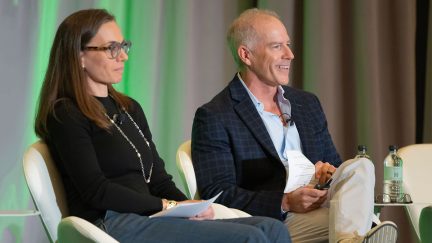Never miss a story — sign up for PLANADVISER newsletters to keep up on the latest retirement plan adviser news.
Advisers Make Investors More Confident About Retirement
Americans are missing out on a great opportunity to work with advisers, Northwestern Mutual says in its survey report, “2015 Planning & Progress Media Study: The Value of Financial Advisers.”
Those who have partnered with an adviser are far more confident about their financial security in retirement—yet just one-quarter, 26%, of U.S. adults rely on an adviser when making financial decisions.
It is not surprising, then that only 40% of U.S. adults have set financial goals, 30% regularly monitor their progress against their financial plan, 26% have identified strategies to meet their goals, 18% have sought advice from a financial adviser, 17% have established an ongoing relationship with an adviser, 12% have developed a written financial plan to address their goals on their own, and 8% have developed a written plan to address their goals with an adviser. Only 9% strongly agree that their plan could withstand market cycles.
Among the 40% who have set financial goals, the reasons appear to be reactive rather than proactive, with 59% saying they received a cash windfall, 38% saying they were challenged with an unexpected financial emergency, and 23% citing a change in either their or their spouse’s employment.
Americans are misinformed about how much they need to have saved in order to work with an adviser, with 30% saying one needs a certain level of assets, 27% saying they do not think they could afford one, and 19% saying it hinges on meeting an adviser they could trust.
NEXT: Working with an adviser
Among those who do have an adviser, the majority, 73% assessed the adviser’s experience and knowledge, 44% considered their reputation, and 34% looked into their client service.
Seventy-two percent of investors who use a financial adviser consider themselves disciplined or highly disciplined in their financial planning, compared to 46% of those without an adviser, and 89% say they feel financially secure or very financially secure, compared to 62% of those without an adviser. Seventy-nine percent of pre-retirees who have an adviser expect to be happy in retirement, compared to 65% of those without an adviser.
Investors with a financial adviser are also more focused on saving, with 76% describing themselves as savers, compared to 62% of people without an adviser. Sixty-four percent of those with an adviser say they have more savings than debt, compared to 39% of those without an adviser.
Another benefit of working with an adviser is accumulating a more diversified portfolio. Seventy-seven percent of those with an adviser have a savings account, compared to 61% of those without an adviser; 61% have an individual retirement account, versus 23% of those without an adviser; 49% are invested in stocks, versus 17% without; and 48% are invested in mutual funds, versus 11% without.
Americans definitely need the help of advisers to achieve their financial goals, says Steve Mannebach, vice president, field growth and development at Northwestern Mutual. “Financial planning is less about how much you have in assets and more about maximizing the assets you do have,” he says. People should not “let assumptions get in the way of the opportunity to reap the significant proven benefits of working with an adviser.”
Northwestern Mutual’s report is based on an online survey of 2,010 adults that Harris Poll conducted between January 12 and January 30, 2015. The report can be downloaded here.
You Might Also Like:

How Do Advisers Navigate the Convergence of Retirement Planning, Wealth Management?

Rethinking Opportunities for RIA Growth

Advisers Step Up as Clients Face Market Uncertainty
« Health Care Providers Very Attuned to Retirement Readiness